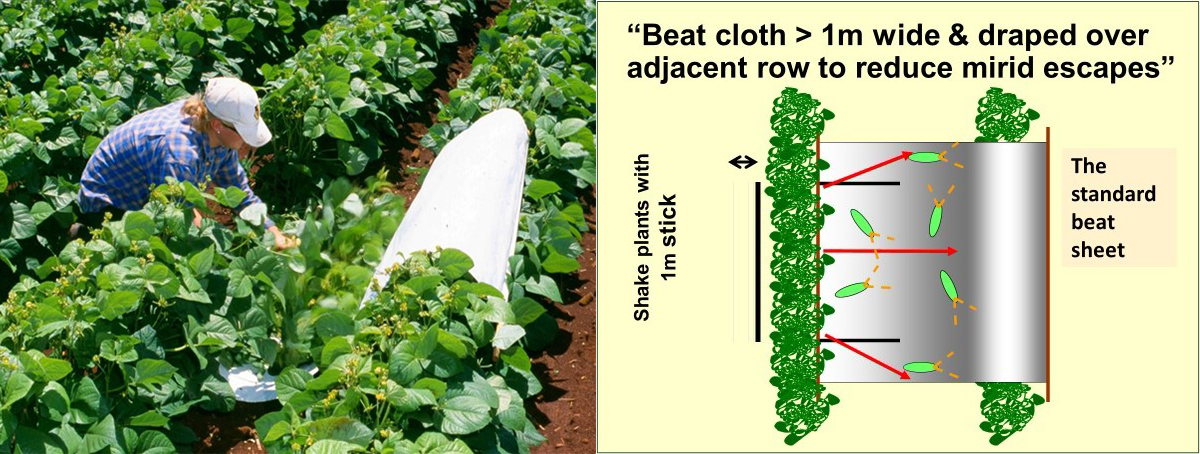How long should my beat sheet stick be? is a question that was asked at a recent Accredited Mungbean Agronomist Course.
A common misconception is that a beat sheet stick should be as long as the beat sheet is wide. A standard beat sheet is usually at least 1.5 m across, but the stick should only be 1 metre long. There are two reasons for this:
- Standardising sampling is easier with a 1 m stick length.
- The extra width of the sheet allows you to catch insects that are flung out at an angle.
Standardised sampling
Pests per square metre is the standard unit of measure for pest density and pest thresholds to allow for easy comparison across crops. By using a 1 metre stick, the insect counts are already standardised to per metre row. To calculate pests per square metre, simply divide counts per metre row (i.e. what is on your beat sheet) by the row spacing in metres. For crops on a 1 metre row spacing, this means dividing by 1 (the counts per metre row are effectively the same as insects per square metre).
The narrower the row spacing, the higher the pests per square metre when converted. For example, two pests found on the sheet in a crop with 50cm (0.5m) rows would equate to a count of 4 pests per square metre (2/0.5 = 4), while in a crop with 90cm rows (0.9m), two pests per metre row would convert to 2.2 pests per square metre (2/0.9=2.2).
Catching insects efficiently
For accurate sampling, beat sheets must have sufficient depth to comfortably drape over the adjacent row to stop insects being flung through that row (see picture on the left below). The original sampling sheet was a humble fertiliser bag laid flat on the ground between rows, but this technique captured only 50% as many insects as the current standard beat sheet.

Beat sheet sampling in 90 cm rows. The sheet needs to have sufficient depth to drape over the plants in the adjoining row and sufficient width to capture insects flung out at an angle.
Beat sticks can be made of dowel or PVC pipe. They need to be strong enough to not bend or break when vigorously shaking plants towards the sheet. Beat sheets are usually made of light-weight white or yellow polyethylene tarpaulin fabric. The lighter colours make insects easier to see, however yellow is usually more popular as the white sheet can be prone to sun glare.
Beat sheets can even be tailored to different crops. A dryland mungbean crop needs far less sheet depth than an irrigated soybean crop with the same row spacing, meaning less weight for you to carry while sampling.
These videos provide more information on how to conduct beat sheet sampling:
